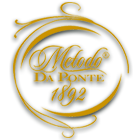The Da Ponte Method
An enchanting revelation for a privileged few
In 1896, Matteo Da Ponte published a “Distillation Manual”, no fewer than four subsequent editions of which were printed by Hoepli of Milan. It was the first scientifically documented manual dedicated to the art and techniques of distillation. Inside were the first illustrations of the stills patented by Matteo and the first alcohol vapour condensation columns that were produced to refine and add a more sophisticated touch to a spirit that was sound but had a rather rough and ready taste. Matteo also gave a detailed description of his renowned Method, which was the only technique with the capacity to bring out and preserve the unadulterated, aromatic varietal qualities of the grapes. Ever since the manual was published back in 1896, the Da Ponte Distillery has scrupulously followed the rules laid down by its inimitable master in order to breathe life into products that are quite simply sublime.
Tradition
A long-standing tradition is built on devotion, research, experience and determined dreamers who have always done their utmost to make spirits into the very essence of excellence. Since the manual containing the Method was published in 1892, the Distillery has meticulously followed the rules with great passion and creativity.
Terroir
Only freshly processed pomace from grapes whose juice has just been drawn off is used to make Andrea Da Ponte’s sublime spirits. All of the grapes come from the protected DOCG (“Controlled and Guaranteed Designation of Origin”) Prosecco area in the Conegliano and Valdobbiadene hills.
Preservation
In order to ensure that the varietal characteristics of the grapes remain fresh and unchanged, it is essential for the distillation to begin at harvest time. This is one of the most important rules established by Matteo Da Ponte’s Method and it continues to be followed today with exceptional skill and care.
Distillation
The Distillery has been using the system of stills patented by Matteo Da Ponte for four generations. It constantly tweaks and enhances the process, such as by introducing vacuum techniques and cutting-edge flavouring procedures.
Analytical checks
The master distillers still rely entirely on their finely honed senses during the delicate process of cutting the heads and tails. However, checks on impurities and the aromatic blends are conducted using high-tech equipment in order to keep the quality unbeatably high.
Ageing
After painstaking selection, the batches of grappa that are best suited to natural ageing are put in barrels and barriques made of oak from Limousin and left in the distillery’s peaceful cellars. There they will develop soft, finely balanced and clean-cut aromatic qualities, in a process that can take anywhere between four and more than 12 years.
An ancient art that takes fresh shape every day
Selecting the pomace
The production process for grappa begins with the collection of the pomace, which normally arrives in the distillery in the evening so that it can be processed fresh immediately. It is done at night when the air temperature is lower, as it can be spoiled if the temperature is too high. The pomace is painstakingly checked and then put into vertical, temperature-controlled tanks so that fermentation can take place at a slow, regular pace.
The secrets of the Da Ponte Method
Distillation
After a few days in silos, the prosecco pomace undergoes double distillation. In the first phase, the pomace is heated and the alcohol vapour evaporates and is then condensed. This produces a solution of approximately 20% alcohol by volume. In the second distillation stage, the vapour enters the fractionating columns, where it is fractionated numerous times in order to purify it and separate the fractions containing methanol and the parts of alcohol with the highest boiling points. The entire production process is constantly monitored, with both analytical checks and sensory tastings.
Letting things take their time
Ageing
The grappa is checked to ensure that its quality meets the required standards, then it is left in barrels made of oak from Limousin in the ageing warehouse. In spring every year, an assessment is made of how it has matured. Finally, it is diluted to the desired strength and filtered, before being bottled and packaged.
Environmentally friendly grappa and production techniques
The first distillery in Italy to introduce green technology
Andrea Da Ponte was the first distillery in Italy to introduce environmentally friendly technology, beginning the process back in the 1980s. The production plant now has a 110 kW photovoltaic system, waste heat recovery units, and purification systems for effluent and fumes. It has almost zero emissions. The company’s crowning glory takes the form of biomass boilers – which mainly run on grape skins and seeds – and the associated production of biogas. It is a choice that once again underlines the ability to stay ahead of the times and the concrete respect for nature for which the entire Da Ponte – Fabris family have always been renowned.
Sign up for the newsletter


